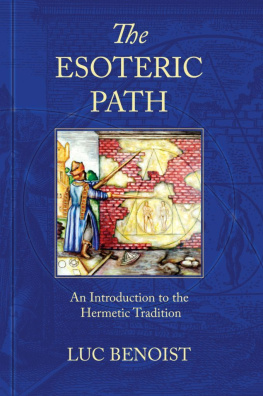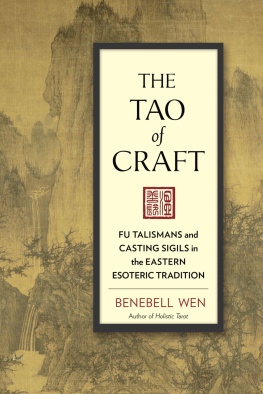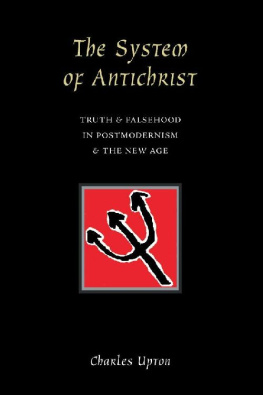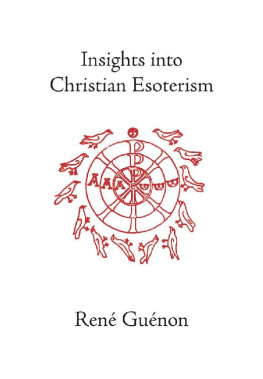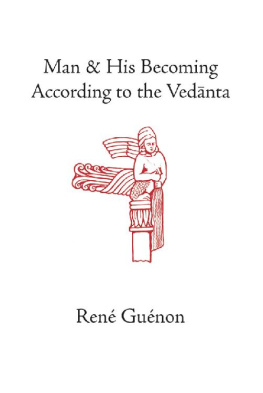THE ESOTERIC PATH:
AN INTRODUCTION TO THE
HERMETIC TRADITION
LUC BENOIST
THE ESOTERIC PATH
AN INTRODUCTION
TO THE HERMETIC
TRADITION

Translated with an
additional chapter by
Robin Waterfield
SOPHIA PERENNIS
HILLSDALE NY
Originally published in French as Lsotrisme
Presses universitaires de France, 1965
Second edition, Sophia Perennis, 2003
First edition, Crucible Books, 1987
Sophia Perennis
All rights reserved
No part of this book may be reproduced or transmitted, in any form or by any means, without permission
For information, address:
Sophia Perennis, P.O. Box 611
Hillsdale NY 125295
sophiaperennis.com
Library of Congress Cataloging-in-Publication Data
Benoist, Luc, 1893
[sotrisme. English]
The esoteric path: an introduction to the hermetic tradition/Luc Benoist; translated with an additional chapter by Robin Waterfield. 2nd ed.
p. cm.
Includes bibliographical references.
ISBN 0 900588 04 7 (pbk: alk. paper)
ISBN 1 59731 013 1 (cloth: alk. paper)
ISBN 978-1-59731-973-7 (ebook)
1. Occultism I. Robin E. (Everard), 1914-2002 II. Title.
BF1412. B 3613 2004
135.4dc22 2004000045
CONTENTS
INTRODUCTION
The world only survives
because of the secret.
Sepher Ha-Zohar
READERS of a collection as modern as the series Que Sais-Je? may perhaps be surprised to find a study on esoteric teachings included in it. The doctrines of esoterism which this work discusses are among those which modern science considers as outmoded and archaic and not possessing any precise objective capable of experimental proof. Adopting such a position, however, confuses science and technology with reason. For if it is logical to respect the principles of rationality, which are not in doubt, it is not logical to limit their application. Every system is true in what it affirms and false in what it denies, said Leibnitz, one of the founders of the infinitesimal calculus. Every negation cuts off an element of the possible from reality, an element which it is the task of science to elucidate. So it is illogical to reduce everything to its rational and technological aspects, valuable as these are in their own domains. The ancient history of primitive man is also a part of the domain of science. And is it not obvious that modern man as he lives and functions remains to a great extent primitive, and how much his demands remain archaic and irrational? Simply from the point of view of technology, the most perfect machine does not abolish the original tool or the primitive function it claims to replace. The supersonic airplane does not abolish the use of our legs. The calculator does not prevent the human brain from reasoning as it pleases. Agricultural chemistry still has to pay attention to the law of the seasons and the progress of the sun. The most ambitious calculation of human needs still must take account of human sensitivity and spirituality, which it can never satisfy. Intuition, morals, religion, contemplation, will always elude a general mechanistic approach.
In return, the universal law of balance demands that in compensation for this general materialism an equivalent freedom be granted to the superior claims of the spirit. Esoterism or the inner way provides the best means of supplying this balance. Firstly its role is to furnish the means of understanding the sacred writings of ancient civilizations, both Eastern and Western. These writings have until recently seemed to be impenetrably mysterious, although in reality they describe a perennial reality, and only their expression of it obscures its topical relevance. Then they enable us to grasp the true nature of our own tradition and the aspirations which it satisfies. So even the most modern of men, provided they have remained near enough to their own inner natures to give due respect to the unknown world within them, will become able to grasp a secret which can be confided to them only by allusion.
In the first part of the book our exposition has taken the work of Ren Gunon as a guide; his language, logical and almost mathematical, used to explain supra-rational truths, serves as a symbolic means of conveying these truths. His metaphysical point of view serves as an introduction to the second part, which is concerned with the inner aspects of the principal world religions and of the inner meaning of the initiatic ceremonies to be found in them.
The point of view Gunons work provides gained our assent because of its logical and universal character, independent of any system, of all dogma, and free of all religious or linguistic bias. However, considerations of length have compelled us to make very compressed summaries, and while we have made every effort to avoid superficiality, we do not claim always to have been successful. As a result we have had to ignore all but the major doctrines. Our sole objective, in spite of the lure of many attractive side issues, has been to offer precision and exactitude in a domain from which they are generally noticeably absent.
Some may perhaps regret that we have not given space to the use by certain writers and poets of a certain natural esoterism arising from symbolism and surrealism, and no less to its use by certain modern adherents of structuralism. The enlightened reader will himself be easily able to make such connections. He will understand that no doctrine invalidates any other doctrine or particular points of view about a reality that is so multiform and so mysterious.
The occasional, relative nature of these different points of view does not imply that the inner knowledge which the different forms and structures claim to embrace is also relative, but merely bears witness to the limitations of our means of expression. Esoteric teaching which endeavors to reveal this interior knowledge (without having the means to avoid all imprecision) does permit us to transcend all cultural forms and to attain to those invariable constants in which is hidden the ineffable essence of the truth.
PART ONE: GENERAL CONSIDERATIONS
EXOTERIC AND ESOTERIC
FROM A COMPREHENSIVE VIEWPOINT one finds among certain Greek philosophers the notion of esoteric teaching applied to a form of oral instruction given to chosen disciples. Although it is difficult under such circumstances to be sure of the nature of such teaching, one may reasonably deduce from the conditions under which it was given that it went far beyond philosophy and rational exposition to arrive at a quite different level of truth designed to impart a wisdom which would penetrate the entire being of the pupil, both mind and spirit. Such would seem to have been true of the teachings of Pythagoras which were transmitted through Plato to the neo-Pythagoreans of Alexandria.
This conception of every doctrine as having two aspects, one exoteric and the other esoteric, apparently contradictory but in reality complementary, may be taken as a general rule since it corresponds with the nature of things as they are. Even when this distinction is not openly acknowledged, there exists of necessity in any doctrine of any depth at all something which corresponds to these two aspects, illustrated by such well known antitheses as outer and inner, the bone and the marrow, the visible and the occult, the wide road and the narrow, letter and spirit, the rind and the flesh. In Greece itself the doctrine of the philosophers had been preceded in the same way by the religious mysteries whose very name implies silence and secrecy. We know that the participants had to swear to say nothing of the secret rites which the liturgical drama of the famous nights of Eleusis would have revealed to them, and that they kept their oath without fail.
Next page
